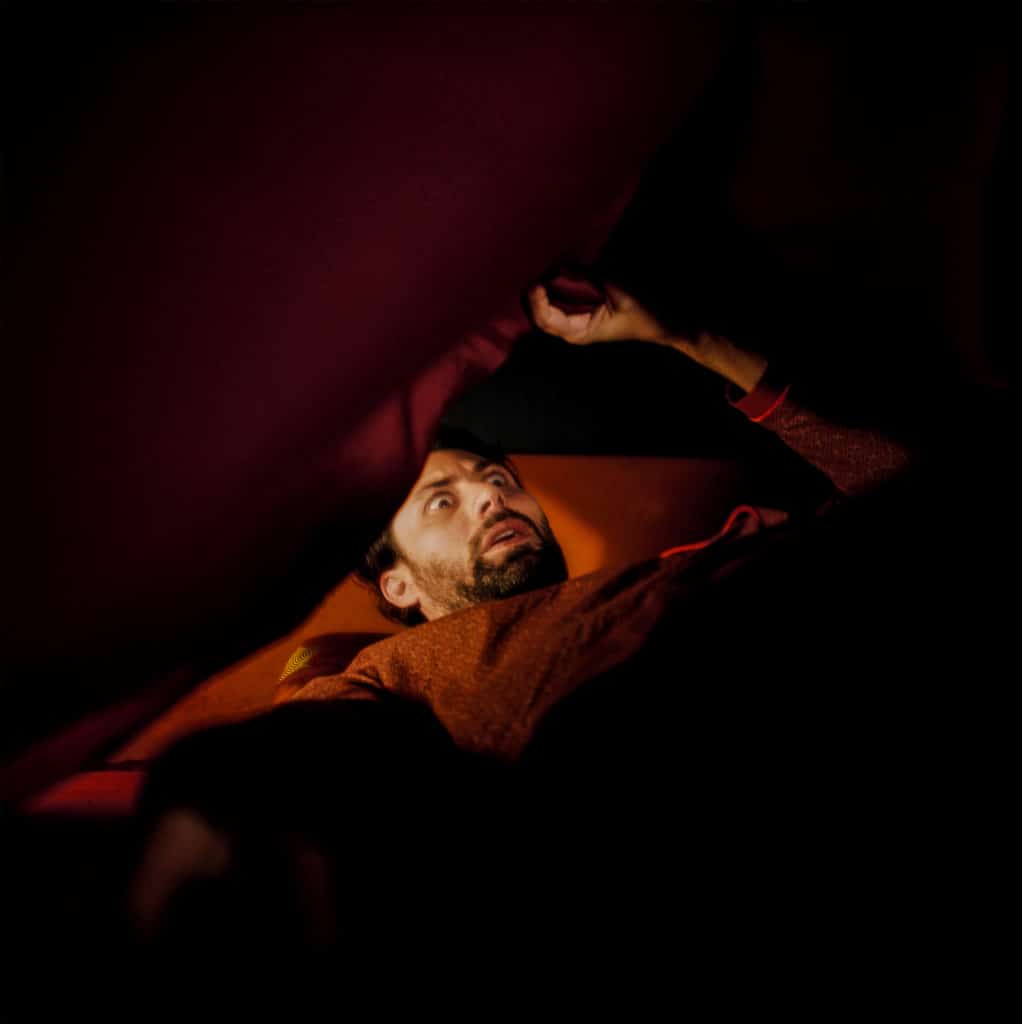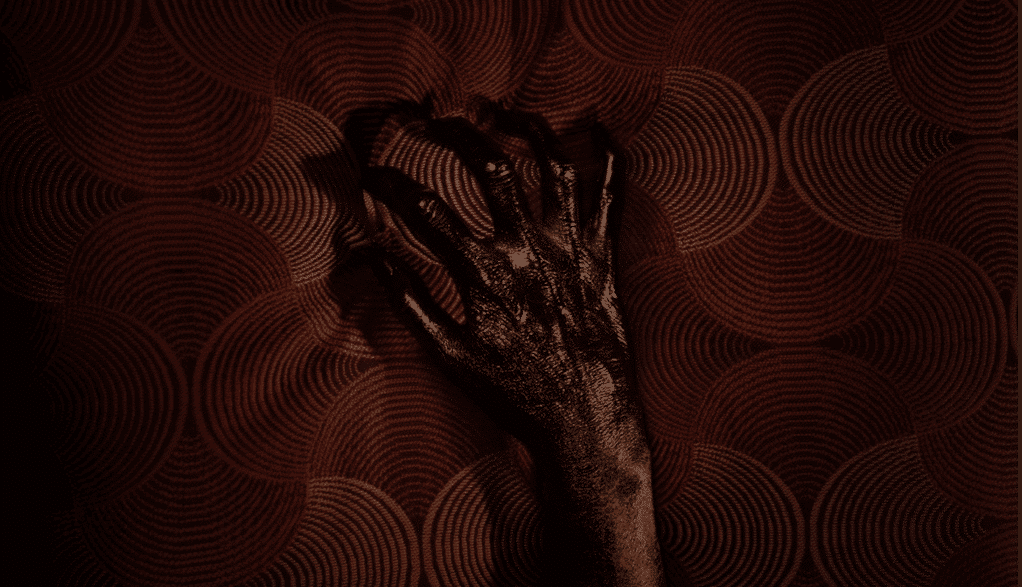
In many respects, horror cinema has always taken the stuff of our nightmares and drawn them out into fully-fledged stories, but also, horror has often explored the phenomenon of the nightmare itself. The Eyes Below – the second feature by Alexis Bruchon, whose debut The Woman With Leopard Shoes made quite an impression on me a couple of years ago – is a film about nightmares. However, with characteristic Bruchon economy and creativity, it doesn’t stop there: instead, the film explores the collision between waking and dreaming nightmares, and how these overlap.
Despite the cosiness of his bedroom, we are introduced to a young man, Eugene (Vinicius Coelho) who is terribly troubled by his dreams. However, even when he awakens, the dreams seem to linger awhile; his bedroom seems to remain odd to him somehow, and he even thinks he sees someone still lurking there. This isn’t so unusual with certain kinds of nightmare, particularly night terrors, but it’s made clear that whatever is troubling Eugene is spilling out into his waking world too. This is impacting upon his career as a journalist, but it seems that he is on the verge of breaking a big corruption case which won’t wait, so – tired or not – the work goes on. (He also seems to add to his nightmare fuel with his other literary pursuits, spending time after hours reading up on mythology and folklore.) Evidently then, he has had a lot on his mind, and the film seems to set up a collision between adult concerns and a kind of fear of bedtime which feels very much like a childhood terror; Eugene’s professional angst could well be feeding into his sleep disturbance, but by night he is as terrified as a child. There are some other intimations of health issues, so clearly there is plenty here to suggest reasons for a broken night.
If anything, though, the subsequent night is even worse. The glimpsed figure of the night previous is back, stronger, and seems determined not to let Eugene rest. He feels pinned to the bed by an immovable weight, or worse, tormented by the mute presence which weaves in and out of view, with regular items in his room changing in size and scale; his room becomes a very different place. He is afraid, but the rational adult in him tries to reason his way out of this situation, looking for clues as a way of rationalising his way out of this perhaps physically harmful dream.
Bruchon has made an artform out of the unsettling here: he clearly understands that nightmares are essentially very lonely, with elements which distance the individual from all the trappings of normality. Everything here, from the panning shots to the camera angles, the interplay between dark and light, right through even to the opening scene focus on the psychedelic-seeming pattern on the bedding – these all establish a weird, foreboding atmosphere. The film looks a little Expressionist in places, and there are a few nods to pre-existing films or literature (The Grudge and The Yellow Wallpaper, for example) but where Bruchon really establishes his own style is via the multimedia aspects he adds to his stories. The importance of written text, which was key to The Woman With Leopard Shoes, is again used here and it turns some elements of the film into a puzzle, one the audience can interact with. Interestingly, the film’s written aspects are presented in lieu of dialogue, which makes for a demanding role for Coelho. He is more than equal to it though, veering between blind panic and a determination to understand. And again, interestingly, this forms another element of overlap with Expressionism as, despite being highly colourised, we come to reply on the written word for our plot explication.
The Eyes Below is, in many ways, a simple idea done horrifically well. It’s a visually stylish collision of rational and irrational, and another exploratory, pithy piece of film by Bruchon.
The Eyes Below will feature at FrightFest 2022. For more details, please click here.
